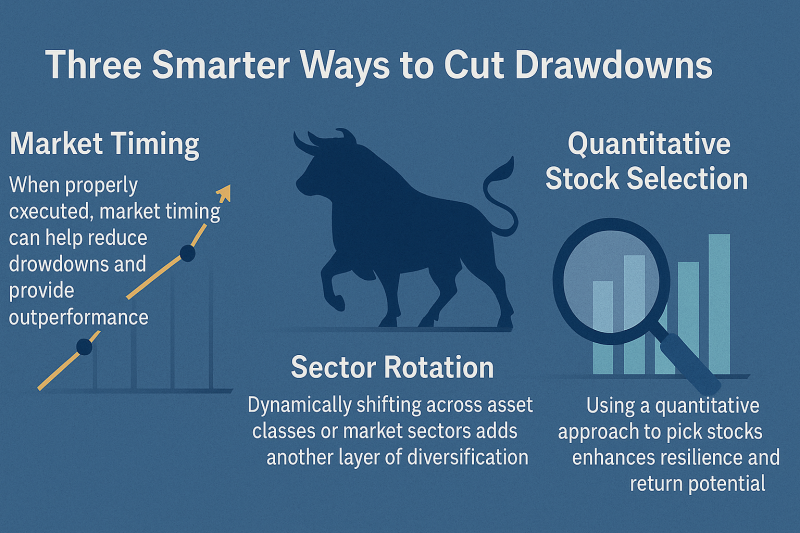Stocks again in a primary bull market.
Well, it seems that the stock market wanted to celebrate the New Year by signaling a new primary bull market.
I closed last year by writing that:
“[b]oth the SPY and Industrials experienced on Dec 28 a pullback exceeding 3% from their 12/18/2012 highs (Industrials: 13350.96; SPY: 145.37). Such a pullback (even if unconfirmed) sets stocks up for a primary bull market signal if the 12/18/2012 highs are bettered.”
Well, the 12/18/2012 highs have been bettered; a not only by one index but by the three indices we monitor. The SPY closed at 145.98, The Industrials at 13412.55 and the Transports at 5435.74 (thus exceeding its 12/20/2012 closing high at 5357.81). Here you have an updated chart:
 |
| Primary bear market signal under Dow Theory January 2, 2013 |
Thus, unambiguously, we got today a primary bull market signal. Even though it was not required under Dow Theory that the three indices confirm (for a more elaborate discussion on the vital issue of confirmations, please read this post)
I am very aware that recently this Dow Theory “flavor” has signaled too many signals in too short time. On June 4, 2012 (even though I was not blogging at that time), the Dow Theory flashed a primary bear market signal which was negated by a subsequent primary bull market signal on June 29. Later, on Nov 16, a primary bear market was signaled (11/07/2012 as per Schannep’s). Some critics would say that such short-lived signals do not bide well with the claim that primary trends tend to last 1-2 years on average. The answer to such an objection is twofold:
Firstly, “average” means “average.” Thus, it is not expected that every Dow Theory primary market is going to match exactly the alleged “average”. Some primary markets will last longer than average (i.e. 1-2 years in bull markets; 6 months in bear markets) whereas others will last significantly less. So it is possible to see bull markets exceeding 6 years as it is possible to see bull markets fading after some few months.
Secondly, the distribution of the duration of primary markets around the average greatly varies according to the secular trend. In other words, when a secular bull market sets in (as we witnessed from the early 80s until 2000) primary bull market signals tend to last longer than average. Of course, it is not so easy “in real time” to ascertain the existence of a “secular” bull market. However, once the secular bull market is clearly over the pattern that emerges is longer than average bull markets.
Personally, I believe that we are undergoing a secular bear market since the year 2000; thus, it is not surprising to see primary bull market swings that end prematurely. Thus, had we had a secular primary bull market; the primary bear market signal of November 16, 2012 would have failed to materialize, and we would still be in the midst of the primary bull market signal of June 29.
In any instance, the Dow Theory does a remarkable good job at protecting us when it is most needed: during secular bear markets. I rather prefer to be out “too early” than too late. Better safe than sorry. So under inconclusive markets, I rather prefer to be out of the market (as it happened since Nov 16) than to be a buy and hold investor and being caught wrong footed when a market collapse sets in. As Warren Buffet says, “rule number one never lose money; rule number two is never forget rule number one.”
All in all, the primary trend and secondary trend of stocks is bullish.
Volume today was higher than one day ago, which has a bullish implication. Furthermore, volume has been constructive and has confirmed the last rally. I’ve seen, however, too many bearish volume indications in the last weeks to label volume as overtly bullish. At best I can label it neutral. Here you have an updated volume chart:
 |
| The last rally has been supported by volume |
Gold and silver closed up. The primary trend and secondary trend remains bearish.
SIL and GDX (the silver and gold miners ETF) closed up. The primary trend remains bullish and the secondary trend bearish (although it may turn to bullish very soon if the 12/12/2012 highs are exceeded).
Here you have the figures of the markets I monitor for today:
| Data for January 2, 2013 | |||
| DOW THEORY PRIMARY TREND MONITOR SPY | |||
| SPY | |||
| Bear market started | 09/14/2012 | 147,24 | |
| Bear market signaled | 11/16/2012 | 136,37 | |
| Last close | 01/02/2013 | 146,02 | |
| Current stop level: Bull market high | 147,24 | ||
| Price chg since bear mkt signaled | Tot decline since start bear mkt | Max Pot Loss % | |
| 7,08% | -0,83% | -7,38% | |
| DOW THEORY PRIMARY TREND MONITOR GOLD (GLD) | |||
| GLD | |||
| Bull market started | 05/16/2012 | 149,46 | |
| Bull market signaled | 08/22/2012 | 160,54 | |
| Exit December 20 | 12/20/2012 | 161,16 | |
| Current stop level: Sec React low | 11/02/2012 | 162,6 | |
| Realized Loss % | Tot advance since start bull mkt | ||
| 0,39% | 7,83% | ||
| DOW THEORY PRIMARY TREND MONITOR SILVER (SLV) | |||
| SLV | |||
| Bull market started | 06/28/2012 | 25,63 | |
| Bull market signaled | 08/22/2012 | 28,92 | |
| Exit December 20 | 12/20/2012 | 29 | |
| Current stop level: Sec React low | 11/02/2012 | 29,95 | |
| Realized gain % | Tot advance since start bull mkt | ||
| 0,28% | 13,15% | ||
| DOW THEORY PRIMARY TREND MONITOR ETF SIL | |||
| SIL | |||
| Bull market started | 07/24/2012 | 17,08 | |
| Bull market signaled | 09/04/2012 | 21,83 | |
| Last close | 01/02/2013 | 23,46 | |
| Current stop level: Bear mkt low | 17,08 | ||
| Unrlzd gain % | Tot advance since start bull mkt | Max Pot Loss % | |
| 7,47% | 37,35% | 27,81% | |
| DOW THEORY PRIMARY TREND MONITOR ETF GDX | |||
| GDX | |||
| Bull market started | 05/16/2012 | 39,56 | |
| Bull market signaled | 09/04/2012 | 47,77 | |
| Last close | 01/02/2013 | 47,1 | |
| Current stop level: Bear mkt low | 39,56 | ||
| Unrlzd gain % | Tot advance since start bull mkt | Max Pot Loss % | |
| -1,40% | 19,06% | 20,75% | |
Sincerely,
The Dow Theorist




